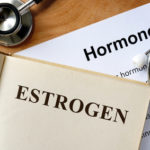 Soy has been touted as a health food for a long time now. A common argument you hear everywhere is that it must be healthy since Asians are slender and generally healthy, but is this true? How much soy and what preparation of soy do Asians consume most? Find out more in today’s article.Soy was first used as a food dating back to 1134 – 246 B.C., after the Chinese learned to ferment soybeans to make foods like tempeh, natto and tamari. But contrary to belief average soy food consumption in China is only about 2 teaspoons per day and in Japan, about 1-2 tablespoons. Asians consume soy in small amounts as a condiment, not as a replacement for animal protein. Most modern soy is not fermented and processed to neutralize the toxins contained in it, but rather increases the levels of carcinogens. Also, soy is not a complete protein, like all legumes, because it lacks sulphur-containing amino acids and the compound that resembles Vitamin B12 cannot be used by the human body.
Soy has been touted as a health food for a long time now. A common argument you hear everywhere is that it must be healthy since Asians are slender and generally healthy, but is this true? How much soy and what preparation of soy do Asians consume most? Find out more in today’s article.Soy was first used as a food dating back to 1134 – 246 B.C., after the Chinese learned to ferment soybeans to make foods like tempeh, natto and tamari. But contrary to belief average soy food consumption in China is only about 2 teaspoons per day and in Japan, about 1-2 tablespoons. Asians consume soy in small amounts as a condiment, not as a replacement for animal protein. Most modern soy is not fermented and processed to neutralize the toxins contained in it, but rather increases the levels of carcinogens. Also, soy is not a complete protein, like all legumes, because it lacks sulphur-containing amino acids and the compound that resembles Vitamin B12 cannot be used by the human body.
This brings me to the fact that soy is claimed to be safe to give to infants. This is very far from the truth. Babies who are fed soy based formula have 13000 to 22000 times more estrogen compounds in their blood than babies fed milk based formula. This is the equivalent of at least 4 birth control pills per day. It has significant impact on the development of boys and girls in different ways. Without going into the technicalities, let me just say that this effects boys’ testosterone levels at a critical time in their development, while girls’ early signs of puberty has been linked to soy formula and environmental estrogens, such as those found in PCBs and DDE.
Since we know that soy effects the hormone levels in infants, it is then safe to assume that it also effects adults. Specifically estrogen levels. To learn more about this important topic, please visit the following website www.westonaprice.org .
Remember, October is Breast Cancer Awareness Month. Why not schedule a Thermogram to gain some valuable information about your breast health?!